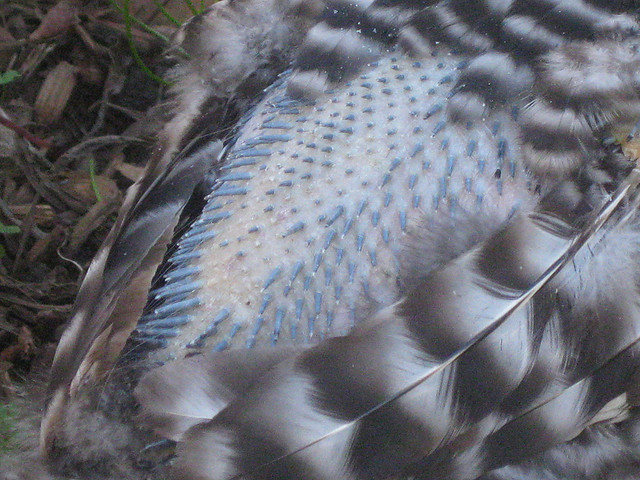
Photo Credit: Feathers lost are discovered in a carton of eggs.
Did you know that chickens have 4 types of feathers? These include webbed feathers, down feathers, bristles and filoplumes. Each type of feather has a different function.
The larger feathers that you are accustomed to seeing on the wings, tail and body are called webbed feathers. They are considered protective during rain and wind. Down feathers or plumules are closest to the skin and provide warmth during chilly temperatures. Bristle feathers are found around the nostrils, eyes and beak. You need to looks closely for them. These help keep dust and pests away from their faces. Lastly, filoplumes are like hairs and can be puffed up to keep a chicken warm. You might also see a broody hen or an ill poofed up chicken putting her filoplumes to use.
Chickens over the age of one replace all of their feathers during an annual molt each late summer or early fall. Starting at the head and moving down the body to the tail, the feathers are systematically shed and new feathers emerge.

Photo Credit: Pin feathers begin to emerge through the skin on the back of this chicken.
As new feathers grow in, they are called pin feathers. They are covered in a protein sheath. Once they have fully grown in, the chicken removes the sheath during preening. Pin feathers can be painful and can bleed as they grow in so it is often best to not handle chickens during their molt.
Feathers are comprised of almost 100% protein. This is why during molts egg production will drop off or even cease. To help combat this issue, try feeding your flock temporarily some high protein treats such as sunflower seeds and meal worms. Dark leafy vegetable are also high in protein as well as cooked beans and corn.

Photo Credit: Poofed up chickens can also be found when taking dust baths.
Sometimes, chickens will appear to have feathers that do not return after they fall out or are picked at. This is because the tip of the feather is still inside their skin. It is not uncommon for those chickens with bare bums or backs to wait until the fall molt for those feathers to grow in anew.












